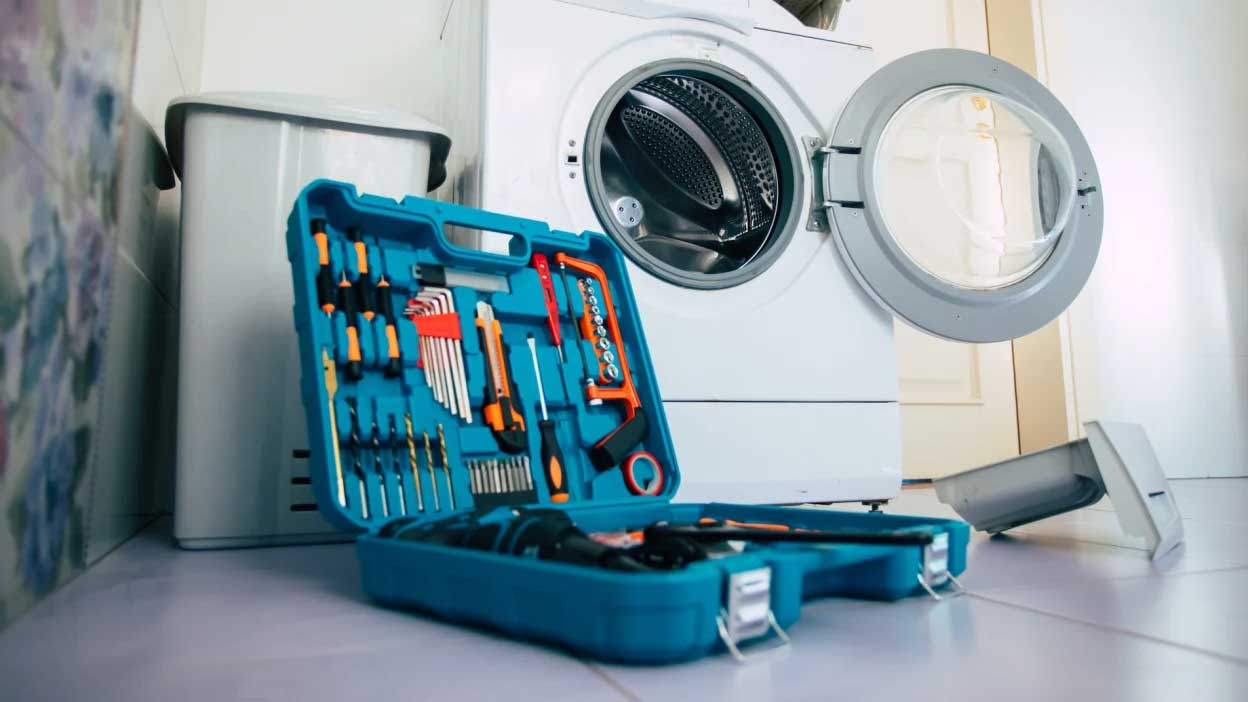
A washing machine that refuses to spin can disrupt your laundry routine and signal underlying issues. Before seeking professional assistance, consider these common causes and troubleshooting steps to potentially resolve the problem yourself.
Common Causes and Solutions
1. Overloaded Washer
An overloaded washer can prevent the drum from spinning properly.
Solution: Remove some items to lighten the load and attempt the spin cycle again.
2. Unbalanced Load
Washing bulky items like comforters or towels can create an unbalanced load, causing the washer to stop spinning.
Solution: Rearrange the items to distribute weight evenly. If the issue persists, try washing bulky items separately or adding more items to balance the load.
3. Washer Not Level
An unlevel washer can lead to operational issues, including spin cycle problems.
Solution: Use a level to check the machine’s balance. Adjust the washer’s feet as needed to ensure all four are firmly on the ground.
4. Faulty Lid Switch
The lid switch is a safety feature that prevents the washer from spinning when the lid is open. If malfunctioning, it can halt the spin cycle.
Solution: Test the lid switch by pressing it manually; if the washer starts spinning, the switch may need adjustment or replacement.
5. Worn or Broken Drive Belt
A damaged drive belt can hinder the drum’s ability to spin.
Solution: Inspect the belt for wear or damage. If found defective, replacing the belt may resolve the issue.
6. Clogged Drain Pump
A clogged drain pump can prevent the washer from draining water, which in turn stops the spin cycle.
Solution: Check the drain pump for obstructions and clear any debris.
When to Seek Professional Help
If these troubleshooting steps don’t resolve the issue, it may be time to consult a professional appliance repair service. Technicians can diagnose and fix complex problems, ensuring your washer operates efficiently.
Preventative Maintenance Tips
- Regular Cleaning: Clean your washer’s drum, dispensers, and filters to prevent buildup that can affect performance.
- Avoid Overloading: Adhere to the manufacturer’s load recommendations to prevent strain on the washer’s components.
- Inspect Hoses and Belts: Periodically check hoses and belts for signs of wear or damage, replacing them as needed.
By following these steps, you can address common issues that prevent your washing machine from spinning and maintain its optimal performance.
For more information on appliance repair services, including refrigerators, dryers, microwaves, dishwashers, ice makers, cooktops, ovens, and garbage disposals, visit Bobbitt Appliance Repair.
FAQs
1. Why won’t my washing machine spin or drain?
This is often caused by a clogged drain pump, unbalanced load, or a faulty lid switch. If troubleshooting doesn’t fix the issue, a professional washer repair technician can diagnose the exact cause.
2. Can I fix a washer that won’t spin on my own?
Yes, basic issues like an overloaded drum or uneven load can be fixed easily. However, mechanical problems like a broken belt or motor issue should be handled by a certified appliance repair technician.
3. How do I know if the washer’s lid switch is broken?
If your washing machine fills with water but doesn’t spin when the lid is closed, it could be the lid switch. Test it by pressing down manually; if the spin starts, the switch may need replacement.
4. Should I repair or replace my washing machine?
If your washer is less than 8 years old and the repair is affordable, fixing it makes sense. However, for older machines or major part failures, replacement may be more cost-effective.
6. How fast can I schedule a washer repair appointment?
We offer fast, reliable scheduling—often with same-day or next-day service in many areas. Visit Bobbitt Appliance Repair or call us directly to check availability in your area.
